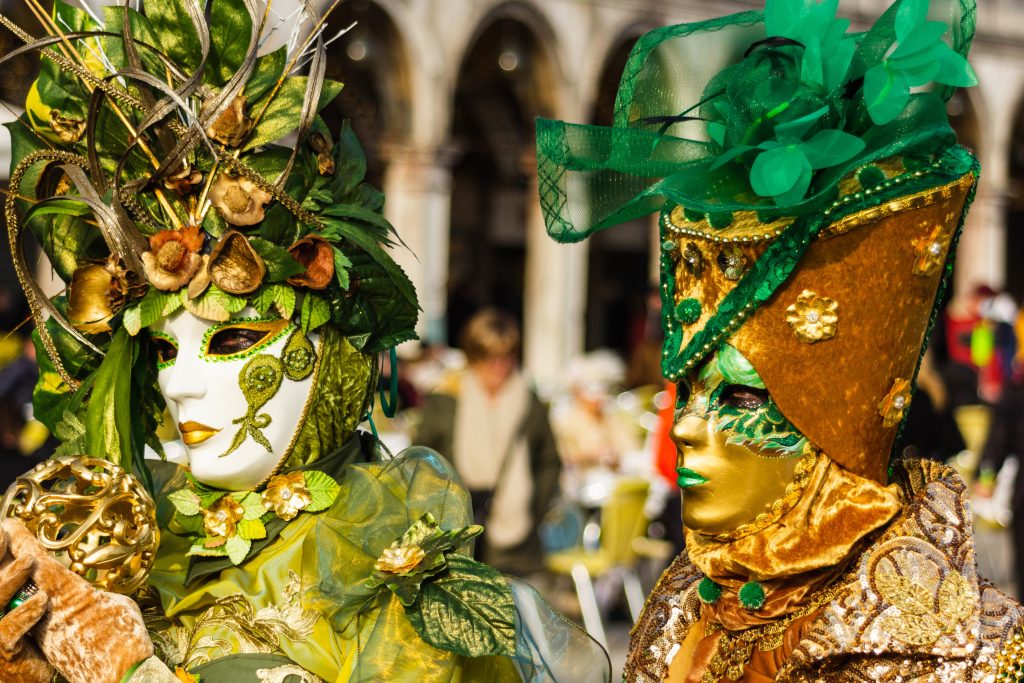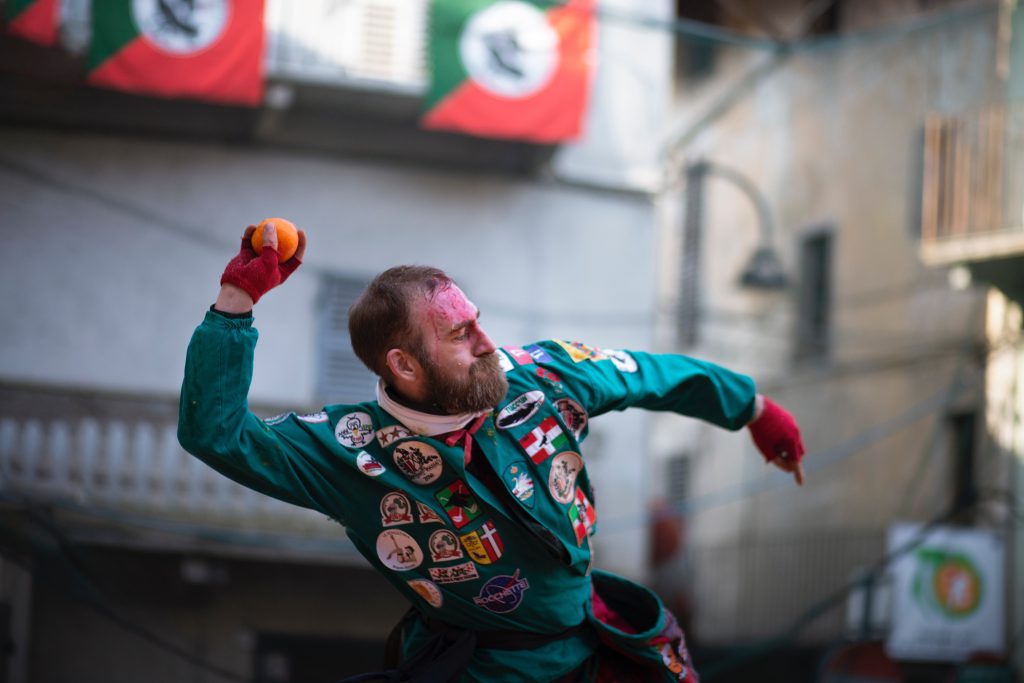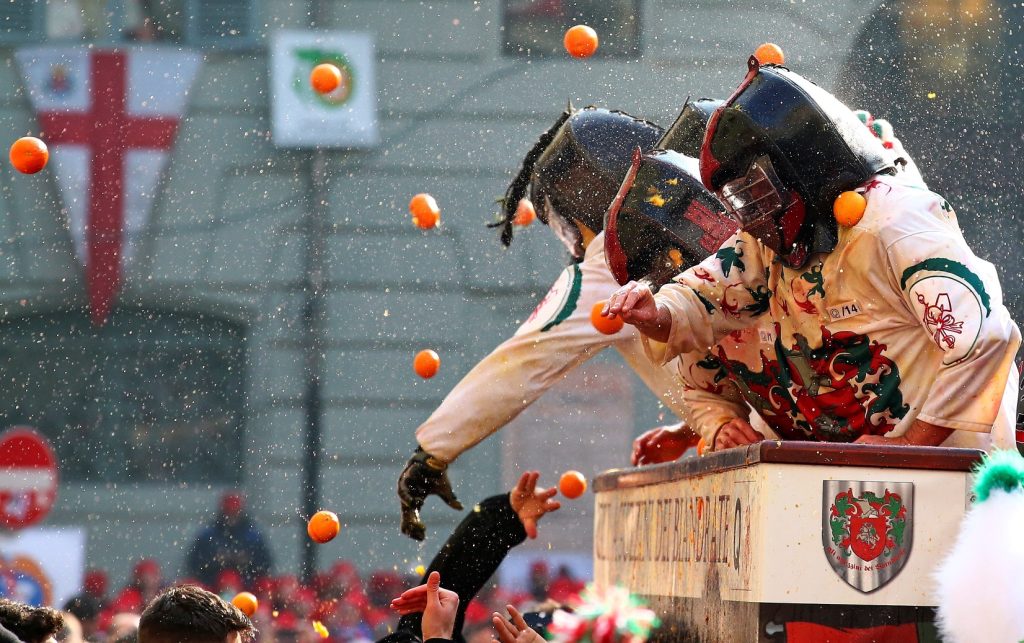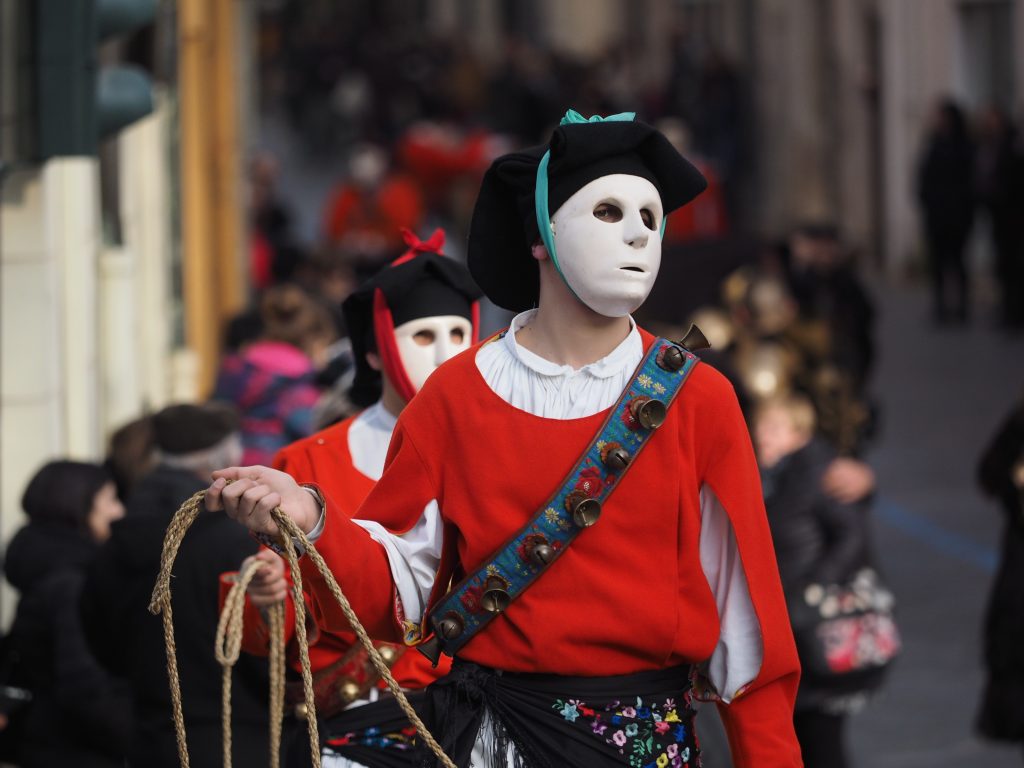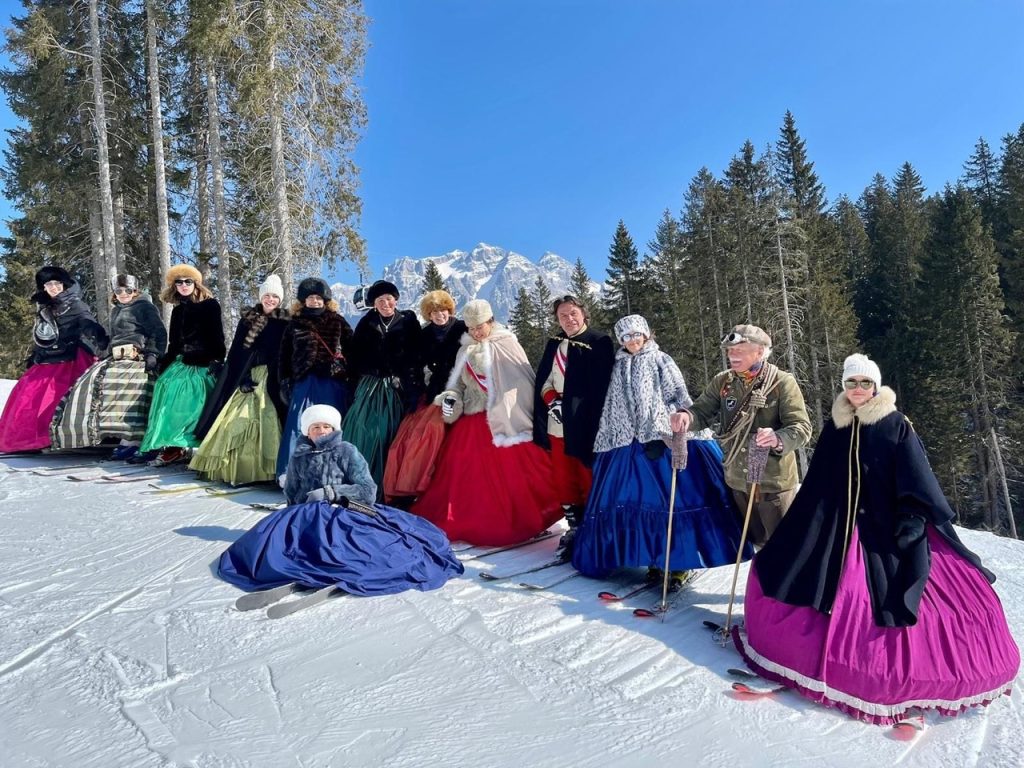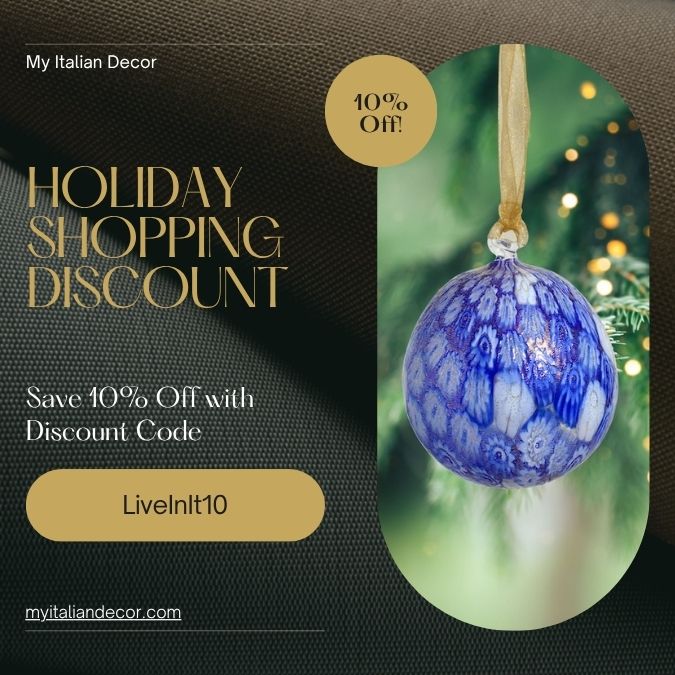Carnevale. When you hear the word, you most likely think about Venice. Celebrated since 1162, the Carnevale di Venezia began as a celebration of the Venetian Republic’s victory over their enemy, Aquileia, a Roman colony. Carnevale, however, has roots that extend to ancient Greece and Rome to celebrate the end of dark winter days with an explosion of color, food, and fun. The once-pagan celebrations evolved and wrapped itself into Catholic tradition by becoming a final bit of gaiety before the solemnity of Lent.
Today, you’ll find carnevale celebrations—large and small—all over Italy. Technically, the celebrations are similar in a lot of ways—parades, floats, costumes, confetti, dances, etc. While the reasons for the celebrations are similar, many have a unique history.
Ivrea, Piemonte
Located near Torino, Ivrea celebrates carnevale from the Saturday to the Tuesday before Ash Wednesday with one big food fight. The highlight is its three-day Battaglia delle Arance (Battle of the Oranges) which commemorates the townspeople’s revolt against the tyrant who had a stranglehold on the town in the 12th century.
Legend says that the duke tried to rape the young bride; instead, she decapitated him, starting the revolution. The citizens destroyed the castle and threw sticks, rocks, and stones at the duke’s troops.

Courtesy unsplash.com 
Courtesy shutterstock.com 
Courtesy shutterstock.com
Today, nine teams on foot represent the town and battle the “tyrant’s troops” who are on carts. The battle rages for three days (Sunday-Tuesday) with a jury observing the battles. After the last battle on Tuesday, the jury bestows awards on the winners (both walking and wagon teams).
During the three-day battle, the participants go through about 500,000 pounds of oranges. If you go and don’t want to be covered in orange peel, juice, and pith, be sure to wear the sock-shaped berretto frigio. Red cap or not, though, if you get too close, an errant orange may hit you.
Fano, Le Marche
Celebrating the reconciliation of two of the town’s families, the carnevale in Fano dates to 1347. On Sundays during February, the town holds parades that feature large papier mache caricatures of famous characters. The floats pass through the town three times. The first pass is to present the wagons to the town. On the second pass, the getto, participants throw sweets instead of confetti from the floats. Visitors hold up paper cones to catch the chocolates, candies, and sugared almonds.
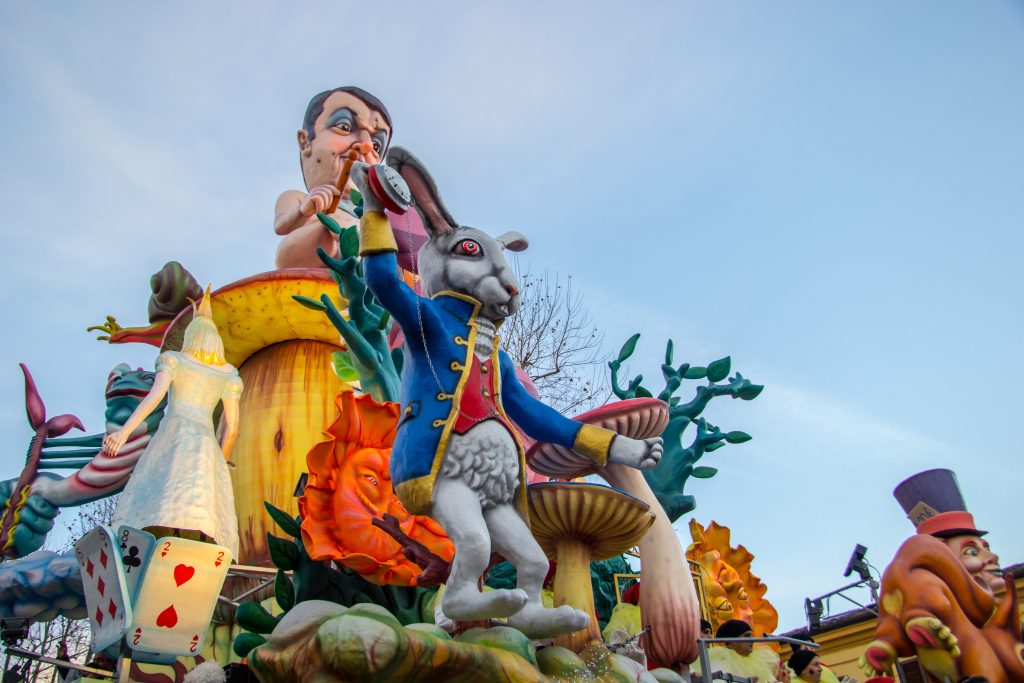
In the late afternoon, the floats pass by for the third time. During this luminaria, the participants use lights to illuminate the wagons. At the end of the last day, they hold a bonfire to bid good-bye to the dark days of winter.
Castrocaro Terme, Emilia-Romagna
One of the youngest celebrations in Italy is the Carnevale da Cani (Carnevale of the Dogs). Begun in 2016, this carnevale honors our four-legged friends. Included are a “six-legged” parade of dogs and owners dressed in costumes and masks. Because some of the dogs are not wild about costumes (or masks), they need wear only one item that matches their handler’s costume or mask.
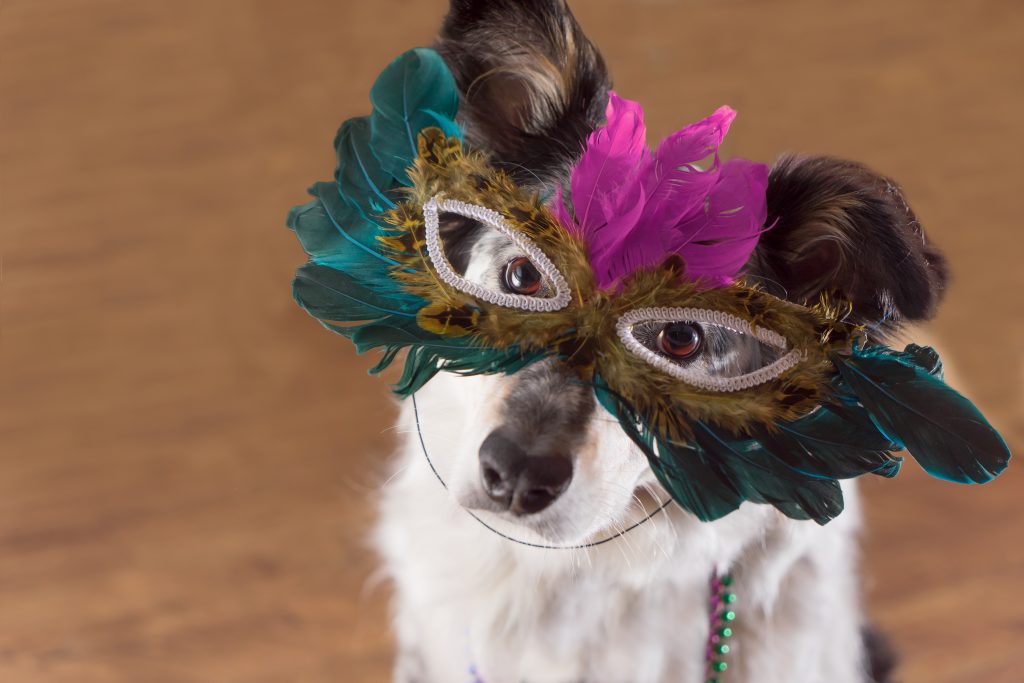
At the end of the parade, the dogs can participate in demonstrations of tricks and other entertainment. While dogs are the focus of this carnevale, humans can participate in a a few events at the end of the parade.
Putignano, Puglia
The longest carnevale in Italy, Carnevale da Putignano begins on December 26 and ends on Mardi Gras (Tuesday before Ash Wednesday). In 1384, the Knights of Malta moved the relics of St. Stephen to the town for protection. The citizens followed behind them and celebrated with songs, dances, and comedy.
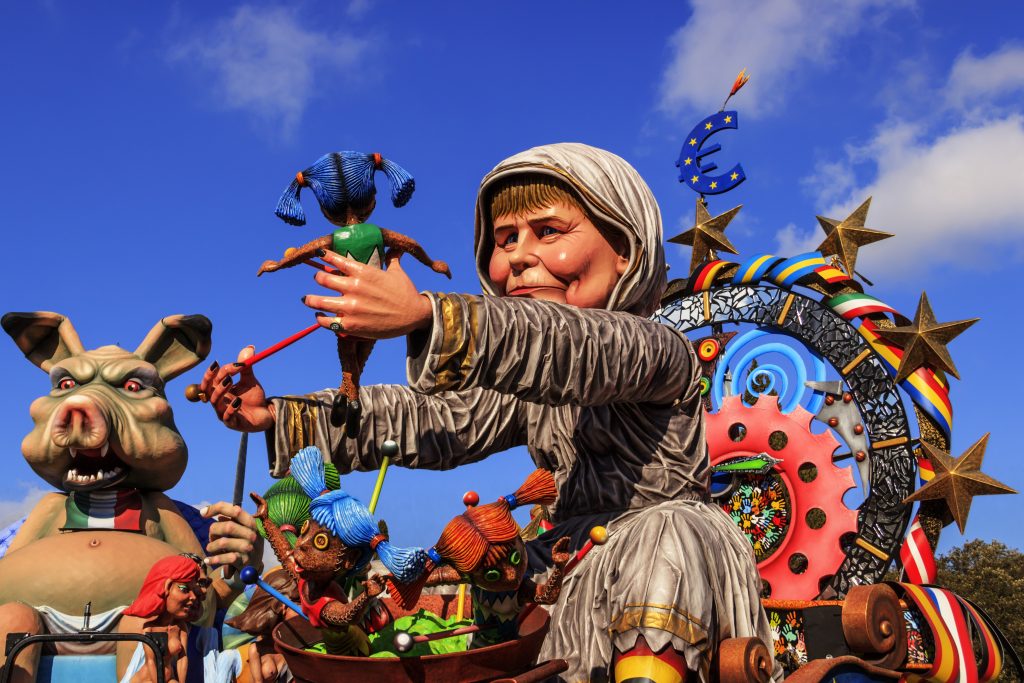
Today, in addition to the floats filled with papier mache characters and parades, you’ll find masked people reciting poetry and singing in the town’s piazze.
Mamoiada, Sardinia
Don’t expect to see the colorful papier-mâché floats and jeweled masks during the Carnevale da Mamoiada. Instead, you’ll find wooden masks, sheepskin clothing, and waistcoats.

Courtesy shutterstock.com 
Courtesy shutterstock.com
Wearing black masks, dark sheepskin, and bronze bells on their backs are the mamuthones. In white masks and pants, red waistcoats, and black hats are the issohadores. During the parade, the issohadores lead the mamuthones (in groups of 12) through the town, all rhythmically dancing as they go.
Many believe that the festival dates to the ninth century to celebrate the victory of the shepherds over the Saracen invaders. The shepherds (issohadores) paraded their prisoners (mamuthones) around the town. Others believe that the issohadores represent shepherds who have tamed oxen (mamuthones). They say parade started as an honor to some agricultural or pastoral celebration.
Madonna di Campiglio, Trentino-Alto Adige

Participants in the Imperial Ski Parade © Carnevale da Madonna di Campiglio
The region of Trentino-Alto Adige honors its Austro-Hungarian roots during the seven-day Carnevale Asburgico (Carnevale Hapsburg) in the small town of Madonna di Campiglio. The participants, dressed in period costume and elegant masks, ride through the town in carriages on their way to royal balls.
The Emperor’s Grand Ball transports the town to the royal courts of Vienna. Wearing period costume, participants waltz to beautiful music. Even more popular is the Imperial Ski Parade. Costumed skiers holding descend down the slopes to the tune of Viennese waltzes. You can watch this year’s ski here.

